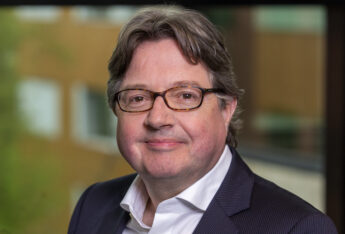The investment arms of Allianz and FMO recently launched one of the largest blended finance initiatives to date, aimed at propelling sustainable development in emerging markets. We look at the details of this landmark collaboration.

At the end of last year, Allianz Global Investors (Allianz GI) and FMO Investment Management (FMO IM), the investment arm of Dutch development bank FMO, agreed on one of the biggest blended finance funds on record, raising $1bn (€929m) to invest in loans helping emerging countries achieve sustainable development.
The SDG Loan Fund aims to deploy 100-120 loans over an investment period of 25 years, and specifically targets SDG 8: Decent Work and Economic Growth, SDG 10: Reduced Inequality and SDG 13: Climate Action, in emerging and frontier markets in Africa, Eastern Europe, Asia, and Latin America.
As we reported at the end of last year, Allianz GI will manage the fund and have veto rights on asset allocation, whereas FMO IM will be in charge of the underlying portfolio of loans.
The fund benefits from multiple layers of risk protection including a $111m first-loss investment from FMO, which is backed by a $25m unfunded philanthropic guarantee provided by the MacArthur Foundation, as part of the Catalytic Capital Consortium (C3). In addition, Swedish pension provider Skandia also invested $100m.
The further mobilisation of private capital into emerging markets is increasingly urgent and blended finance structures offer a way for investors to address the perceived risk of investing in the region.
However, investors can still be reluctant to get involved. Investment opportunities can be unfamiliar, with projects sometimes being too small or bespoke for some to justify an investment.
These are all fears which FMO IM, Allianz GI and MacArthur hope the story of the fund’s creation may help to debunk.
Catalytic capital

“Whether we win or lose the battle on climate depends on what we do in emerging markets,” says Nadia Nikolova, Allianz GI’s lead portfolio manager for the firm’s development and impact credit team.
Having begun working within impact investing in 2003, Nikolova explains insurance firms will become increasingly concerned about climate change as the threat it poses to pensions in the developed world is inevitable.
“We have one climate and currently two thirds of global emissions are generated in emerging markets and those are going between double digit rate per annum,” Nikolova says.
“Increasing expansion of the deserts increases the risk of mass migration. Such mass human crises have the potential to impact developed markets. Equally, more volatile weather increases the risk for insurance claims on insurance companies globally,” she adds.
Currently the SDG funding gap is phenomenally big, due in part to development banks becoming increasingly capital constrained, while sovereigns cannot issue more debt, especially in emerging markets, due to rising interest rates.
For MacArthur this enormous SDG funding gap is an animating factor.
MacArthur selected the fund from over 100 investment opportunities due to its use of catalytic capital to unlock impact and private investment, with a mandate to increase institutional investor exposure to SDG-aligned projects.
Building the fund
Having taken four years to construct and finalise all the terms for the fund, all three parties stress how important it is to view one another as partners. An attitude all say was crucial in allowing them to solve intricate details to create the loan. Crucially, all three share the goal of tackling climate change and promoting better equality within emerging markets.
“Emerging markets are central to the climate issue. People, place and planet all come together in emerging markets in a significant way,” says Debra Schwartz, managing director of impact investments at MacArthur.

“They [emerging markets] cannot access the private capital they need, which is where the real money lies. This is why we launched the Catalytic Capital Consortium in 2019.”
Stressing the importance of catalytic capital, Schwartz acknowledges its limitations: “You cannot expect to change the world, fix the climate, and always find alpha. Catalytic impact investing requires patience, flexibility, and risk.”
Looking back at the process of creating the fund, FMO IM managing director Nic Wessemius stresses that, due to the loans’ unique structure, taking a co-creation approach with Allianz GI was vital. He also highlights the importance of involving all stakeholders when creating the fund terms sheet as soon as possible.

“Have a discussion on the loan structure with your external stakeholders as soon as possible,” he stresses. “Make the conversation even broader than just your auditor. This could be either the tax authority, or your regulator for example. Regulation is changing from time to time and because these structures are quite bespoke, external stakeholders might have a different conflicting view.”
FMO’s participation is a very rare example of a DFI taking a junior position in a fund, and one which illustrates how much impact can be unlocked when DFIs are willing to occupy higher risk positions through first loss investment to unlock private capital.
MacArthur going from co-investing to moving one step down giving FMO a guarantee of the first loss within the portfolio is among the more crucial technical aspects cited by Wessemius as being central in allowing the loan structure to work.
Risk of loss
For Schwartz, making philanthropic dollars punch above its weight and unlock a billion in institutional capital for EM projects is only possible through a willingness to make a loss, adding that she hopes other funds which have been trying these blends of first loss and risk mitigation, can now get a better level of catalysing than they’ve previously seen.
“There are going to be some losses that are unavoidable. But at the end of the day, if we can take the loss, even all the way up to $25m, and have unlocked $1bn in institutional capital, that’s an impact we can get behind,” Schwartz says.





